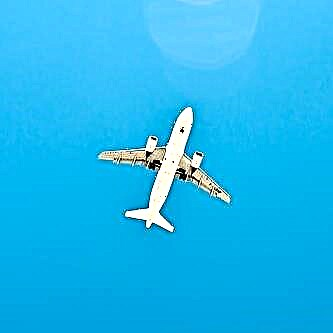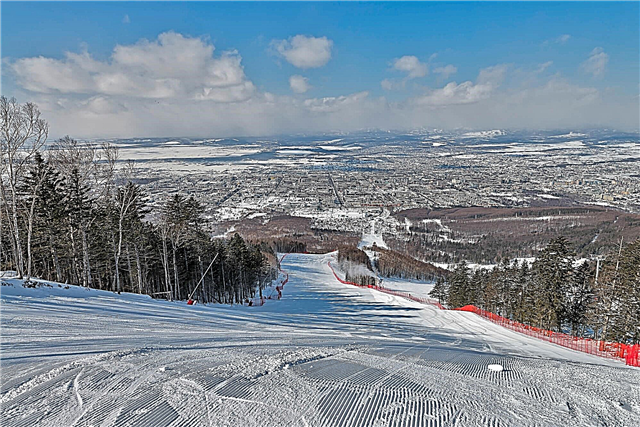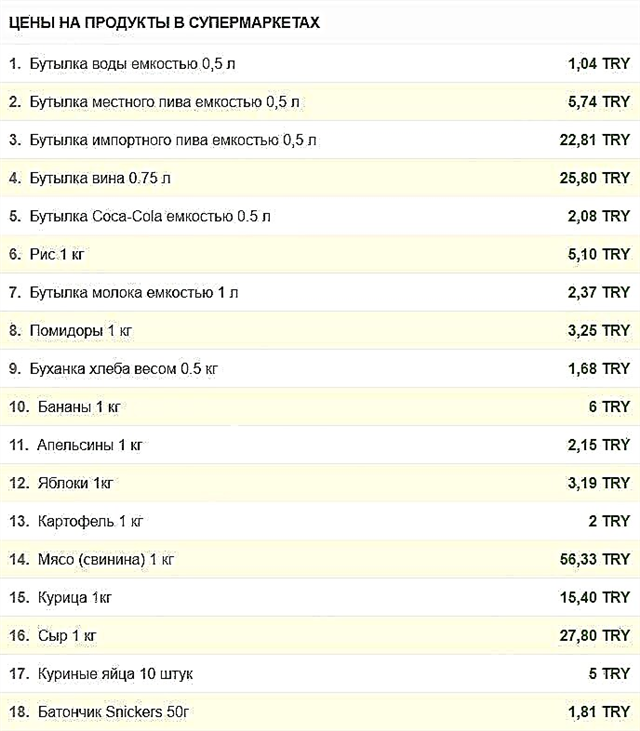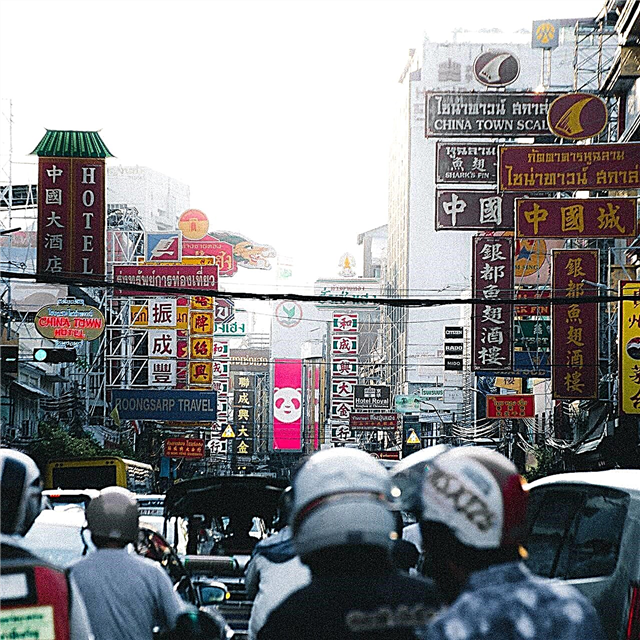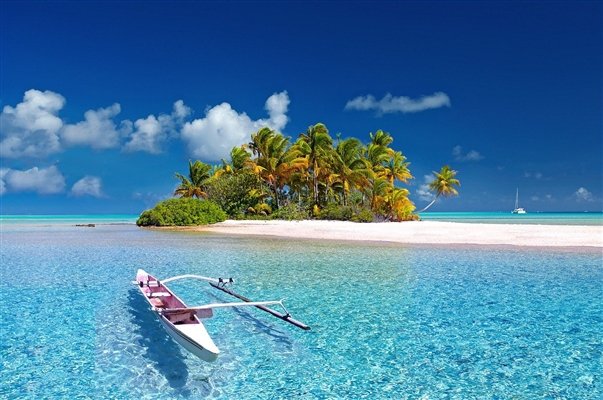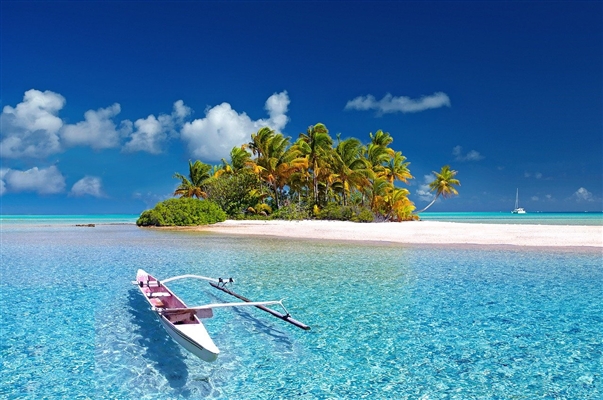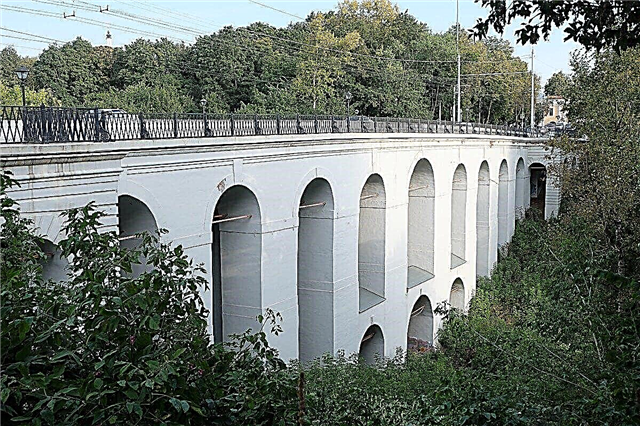There are many interesting places in Kaluga - you can walk along the old bridge, inspect the city man's monument and stroke his dog, admire the ancient architecture and visit iconic monasteries and churches. There are museums - local history, art, drama theater, leading its history in 1777. An unusual combination of historical and modern buildings can be seen on Kirov and Teatralnaya streets.
Particular attention should be paid to the "space" theme. A self-taught scientist Tsiolkovsky lived and worked in the city, therefore Kaluga is often called the "cradle of cosmonautics". One of the main places to visit is the Museum of the History of the Cosmonaut with the Vostok launch vehicle installed nearby. In the house where Tsiolkovsky lived is a memorial museum, and in the park where the founder of the theory of cosmonautics loved to walk is the place of his last refuge.
The most interesting and beautiful places in Kaluga
List, photo with names and descriptions of popular sights of the city. These are the best tourist spots that can be seen in 1-3 days.
Museum of the History of Cosmonautics named after K.E. Tsiolkovsky
One of the largest museums of this kind in Russia. Gagarin and Korolev took part in the creation of the museum. Kaluga was chosen to establish such a museum - after all, it was in this city that Tsiolkovsky was born and worked. The unusual building of the museum is located on a slope. It exhibits rocket and space technology, models of orbital stations. In total, the museum has about 75,000 exhibits - many of them exist in a single copy.

Launch vehicle "Vostok"
The central exhibit of the Museum of Cosmonautics, located on the high bank of the Yaroslavl reservoir and one of the main symbols of the city. This is a genuine complex, which was a duplicate copy of Gagarin's "Vostok-1". The three-stage launch vehicle has a considerable weight - 144 tons and a height of 38 meters. Its capacity is 20 million horsepower. Previously, she took part in exhibitions in Prague, Paris, Rome, Bucharest, Montreal.

Square of victory
The memorial complex on the old square of the city was erected in honor of the victory in the Great Patriotic War. The main object of the complex is the sculpture of the Motherland, installed on a 30-meter obelisk. Represents a female figure with a ribbon that symbolizes the Oka River, and an artificial satellite of the Earth in his hands. The eternal flame burns in front of the obelisk. In the dark, the sculpture is illuminated by illumination.

Church of Cosmas and Damian
Parish church in the Baroque style, built in 1734 on the site of the wooden church of St. Nicholas the Wonderworker. It stands out for its restrained elegance of architecture. The church is like a ship, it has a petal base and high vaults. The portals of the entrances are decorated with columns. The church has a four-tiered bell tower in the early classicism style. It is assumed that one of the architects of the church was a student of Rastrelli.

Kirova street
Located in the historic center of the city. On the main street there are art objects, shops and cafes, cultural, public and entertainment establishments. On the street, 2 km long, there are modern buildings and many architectural monuments, including two churches - John the Baptist and the Myrrh-Bearing Women. On holidays, Kirov Street hosts festive events, processions and parades.

Theater street
The people are called "Kaluzhsky Arbat". It combines bright modern buildings with restored historical and cultural monuments. On the preserved pavement of the 19th century, there is a Zero Kilometer sign. Since 2006, there has been a bronze sculpture of Tsiolkovsky with a bicycle called "Dreams of the Sky". The history of the street began in the 18th century - earlier it was named Oblupskaya, Kutuzovskaya, Lenin.

Kaluga Regional Drama Theater
The Kaluga Drama Theater was founded in 1777 and initially its performances were given in the barn of the merchant Shemyakin. The very first theatrical season was a great success. Since 1790, the theater has been located on Sennaya Square. In 1958, the theater building was defended anew after fires, reconstruction and wartime destruction. The theater troupe includes both young actors and honored artists of Russia.

Kaluga Regional Museum of Local Lore
Founded in 1897. The museum includes several branches. The main expositions of the museum are located in the main building - Bilibin's house. About 100,000 exhibits are divided into thematic collections - weapons, archeology, art objects, dishes, rare books and documents, numismatics. Permanent exhibitions are popular, telling about the history of the Kaluga region, starting from the VIII century and its natural world.

Kaluga Museum of Fine Arts
Combines the funds of the art museum and art gallery. The museum is located in the building of the former estate of the Bilibins-Chistokletovs, built in the early 19th century in the Empire style and is an architectural monument. The department of Russian art is represented by canvases by Aivazovsky, Shishkin, Savrasov, Maksimov. There are expositions of wooden sculpture of the 16th century and ancient Russian painting, European graphics and engravings of the 16th-19th centuries.

Architectural landmarks of Kaluga
The most notable and recognizable buildings and structures of the city. The best monuments of architecture and urban planning, which are worth seeing.
Gostiny Dvor
It was built in the style of classicism with elements of Gothic and early Baroque in the late 18th and early 19th centuries instead of chaotically placed wooden benches. The architectural ensemble of Gostiny Dvor consists of 14 buildings, most of which are interconnected by arches. The facade of the southern buildings is decorated with an arcade with 9 columns on cubic bases. The enclosures form a rectangular area for trading from trays.

A stone bridge
One of the oldest viaducts in Russia - built in 1785. It is thrown across the Berezuisky ravine. The bridge, 160 meters long, is made in the style of Russian classicism. Its height is 20 meters, in the pillars of the bridge there are 15 arches, of which 3 central arches are made of two floors. Trees and bushes grow in the valley below the bridge. Car traffic is organized across the bridge. For the safe movement of pedestrians, a cast-iron carved fence has been installed.

Official places
An architectural complex consisting of administrative buildings of the 19th century. It is a U-shaped ensemble on the banks of the Oka River. The buildings are connected by arches that frame the city park. The construction of the complex of public buildings took almost 30 years. At present, they house the theological seminary, the residence of the Metropolitan of Borovsky and Kaluga, as well as a branch of the Moscow University named after Bauman.

House of the Nobility Assembly
Monument to the architects of the 19th century in the historic center of the city. The brick building was built in the classicism style. Its central part is three-storey, the side ones are two-storey. The facade is decorated with pediments, pilasters, ornaments. There are white columns at the main entrance. Part of the interior has been preserved. The House hosted not only noble meetings, but also musical evenings and charity balls.

House of the merchant Rakov
One of the most beautiful trading houses of the pre-revolutionary period. Once it housed a large toy store Detsky Mir. Under the merchant Rakov, there was a shop and business organizations on the first floor, while the merchant and his family lived on the second floor. Many townspeople often went to the store just to admire the huge luxurious premises, which were decorated with a large aquarium with goldfish.

Cultural landmarks of Kaluga
The most interesting museums to visit.
House-Museum of K. Tsiolkovsky
The house is located on the banks of the Oka River. The scientist of theoretical cosmonautics lived in it for 29 years, starting in 1904.In 1936, a year after Tsiolkovsky's death, a memorial museum was set up in the house. Its expositions are devoted to the biography of the scientist, as well as to the practical implementation of his scientific works. The rooms of the house recreate the atmosphere of a residential building with authentic pieces of furniture. There is a telescope on the roof.

House-Museum of A. L. Chizhevsky
The memorial museum of the great biophysicist Chizhevsky is located in a building built at the beginning of the 19th century. It is a two-storey stone house with a mezzanine, which the scientist's family acquired in 1913. Until 1929, Chizhevsky created his scientific and poetry works in it. Since 2000, a museum has been operating in the building, whose expositions tell about the scientific work, life and work of Chizhevsky, there is an observatory.

Club-Museum "House of Masters"
Located on the old picturesque Voskresenskaya street. The House of Craftsmen is a wonderful example of wooden architecture. The platbands and porch of the building are richly decorated with carvings and wood lace. The expositions of the museum are located in thematic halls - Upper Room, Weaving, Fabrics, Wood. They exhibit ceramic and birch bark products, lace, household items, handicrafts of local craftsmen.

Stone chambers of Korobov
Museum and Local Lore Center. The building was built in the 18th century at the expense of the merchant Korobov. The decor of the facade, the ornament of platbands, arched windows, small semi-columns add elegance to the house. Since 1891, museum expositions have been housed in the chambers, and during the renovation of the museum in the 1980s, ancient treasures were found in its premises. Now the chambers house the exposition "Russian hut" dedicated to the Russian peasantry.

Memorial House-Museum of G. S. Batenkov
The house of one of the participants in the Decembrist movement. Gavriil Stepanovich has lived there since 1857. The scientific elite of Kaluga of the 19th century gathered in a modest wooden house. The Memorial Museum opened in 2009. The expositions occupy 4 rooms of the house. They talk about the war of 1812, about the Decembrist uprising, about everyday life in this era. Museum visitors will plunge into the atmosphere of events significant for Russia.

Places of worship in Kaluga
The main temples and monasteries of the city. Beautiful religious buildings with ancient history.
Trinity Cathedral
The construction of the cathedral began in 1786 on the site of the Church of the Life-Giving Trinity of the 16th century. It looks like a Latin cross, the decor is made in the style of classicism. The architecture of the church is interesting for its unsupported dome - a unique architectural solution is known throughout the country. The bell tower of the cathedral is 70 meters high, the main bell weighs 5 tons. During the reconstruction in the 1990s, a 5-meter royal gate was made.

Church of the Intercession of the Blessed Virgin Mary "on the moat"
A parish church, first mentioned in chronicles in 1626. In the 1680s, the old building was replaced with a stone one. The heads of the one-story church are located at the corners of the church building. Three windows are located only on the north and south sides. The platbands are decorated with a pattern of bricks of different shapes. The octagonal bell tower consists of 2.5 tiers. Its lower part has preserved traces of the ancient arch of the entrance to the temple.

Cathedral of St. George the Victorious "behind the horse"
Orthodox cathedral, built in 1701. Its main miraculous shrine is the icon of the Mother of God. The name "behind the horse" means "beyond the ravine." The cathedral was built on the site of a wooden church, called in the documents of 1626 “the Church of George behind the old prison”. The five-domed church was built in the form of a half-ship. The entrances to the building are made in the Russian style with the use of "Myachkov stone". The windows are decorated with twisted columns.

Church of the Beheading of John the Baptist
The stone building of the church was built in 1735 on the outskirts of Kaluga. The style of the building is Anninsky Baroque. In the 1890s, the painting of the walls was renewed, and the canvas of the iconostasis was renewed according to the drawings of Vasnetsov, Makovsky, Sorokin. Since 1960, the church building has been an architectural monument, but before this status was granted, the church had already been deprived of the altar. The temple was built in the tradition of the 18th century style, and the bell tower has a distinct Gothic appearance.

Kazan nunnery
Founded at the end of the 16th century. The luxurious decoration of its architectural ensemble was one of the best in the country. After 1917, most of the main Kazan Cathedral was destroyed. On the territory of the monastery, a tobacco factory, faculties of Kazan University were alternately located, partly the territory was built up with residential buildings. Since 2004, the restoration of the monastery began, including the Cave Church.

Lavrentiev monastery
The monastery is located on the banks of the Yachenka River. It was founded in the 16th century and its walls repelled enemy attacks several times. By the beginning of the 20th century, there were 3 churches, a bell tower, cells for brothers on the territory of the monastery. During the Soviet era, the buildings were destroyed. Since 1991, the entire historical territory of the monastery has been declared a local natural monument. Work is underway to restore the temple and the bell tower.

The best gardens and parks of Kaluga
The most popular places for walking and outdoor recreation.
Central Park of Culture and Rest
One of the favorite places for recreation and leisure among residents and guests of the city. The park is located in the historic center of the city. There is always something to do here - attractions work in summer, skating rink in winter. A beautiful view of the Oka opens from the observation deck at any time of the year. There are many green spaces in the park. The petiolate oak is included in the register of wildlife monuments - it is more than 100 years old, and according to urban legends, even several centuries.

Observation deck on the Oka in Central Park
Located in a wonderful picturesque place at the highest point of the slope, among trees and shrubs - firs, maples, pines, firs. The observation deck was equipped during the reconstruction of the Central Park in 2010. Since then, it has been one of the favorite places for visitors to the park. It offers a beautiful view of the right bank of the Oka. There is a restaurant nearby, as well as a Ferris wheel and retail outlets.

Peace Square
Previously, this place was a shopping area, where festivities and festive events were held on holidays. Since the 20th century, the history of the square has been associated with space - the scientist Tsiolkovsky lived and worked next to it. Currently, a complex of expositions and museums dedicated to space begins from the Mira Square. In the park there is a monument to Tsiolkovsky, founded in 1957 with the participation of the scientist Korolyov.

Park named after K. Tsiolkovsky
It appeared in the 18th century on the site of agricultural land, earlier it was called "Country Garden". Its trees are now about 200 years old. Belinsky, A. Tolstoy walked along the symmetrical alleys of the park among these trees, and Tsiolkovsky especially often visited the park. Especially for the great scientist, a descent to the Yachenka River was equipped. In the park, the tomb of Tsiolkovsky is located, which is recognized as a historical monument.

Square "Golden Alley"
The linden alley of the square was created at the beginning of the 19th century. The governor of the city of Kaverin took part in its creation. The alley of the square begins at the obelisk, built in 1778. It shows the distances to large county towns. Then it goes along the Berezuisky ravine. In 1949, a monument to the poet A.S. Pushkin. A visit to the alley should be combined with a tour of the building of the Noble Assembly and the governor's house.

Yachensky reservoir
Created before the 1980 Olympics at the mouth of the Yachenka River. The reservoir is of modest size. Its length is 2.5 km, its width is 800 meters, and its depth reaches 7 meters. The reservoir is inhabited by fish, but it is not recommended to catch it because of the pollution of the water. On warm summer days, lovers of outdoor recreation come to the shores of the reservoir. There is a landscaped recreation area - Mir Park with two swimming pools.

Sculptures and monuments of Kaluga
The most famous monuments and monuments adorning the streets and squares of the city.
Monument to G.K. Zhukov
Opened in 2015 on Victory Square. The monument to the famous Marshal of the Soviet Union is made in the classical style.The monument was cast from bronze in the studio of military artists in Moscow. They carefully worked out all the details of the monument, for example, all the orders that Zhukov received are depicted on the jacket. The commander is depicted prancing on a horse. The pedestal is faced with red-black marble slabs.

Monument to the 600th anniversary of Kaluga
Opened in 1977 next to the bridge over the Oka. The base of the monument is a 50-meter pylon. Approximately in the middle of the pylon is the head of an astronaut wearing a pressure helmet. The reliefs on six steles tell about the city's most significant events from its 600-year history. The granite cubes have bas-reliefs depicting Tsiolkovsky and Gagarin. At the foot of the pylon is a sphere representing the globe, which took 700 kg of copper to make.

Monument to Ivan III
In 2013, the first monument to Ivan III the Great in Russia was unveiled in Kaluga. In a swift movement, the sovereign fell on one knee, one hand he stretches forward, the other holds the scepter. The author of the project is A. Korobtsov. The author of the idea is A. Konchalovsky. The monument to Ivan III was erected on the site of the monument to Lenin in the main city park near the building of the regional administration. The opening ceremony was attended by the Minister of Culture of the Russian Federation.
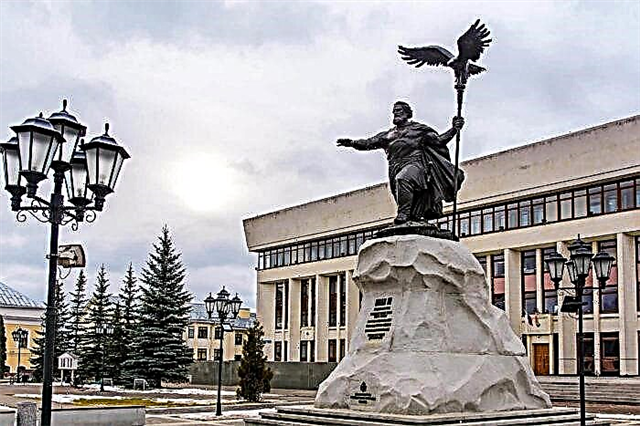
Obelisk in honor of the founding of Kaluga
It is located at the old Stone Bridge. The first memorial sign was created in the 18th century in honor of the arrival of Empress Catherine II. It marks the border of the city. It was by order of Catherine II that Kaluga received its coat of arms and the status of a province. The modern obelisk is a copy of the historical one, destroyed by time. The new obelisk depicts the coats of arms of all cities that were previously part of the Kaluga governorship.

Sculpture "Policeman with a dog"
An unusual monument was erected on Victory Alley in 2014. Depicts a policeman in the lowest rank, with a saber of 1907 and a holster. The height of the stately policeman is about 190 cm, a small dog sits at his feet. She adds soulfulness to austere sculpture. On the badge and badge of the policeman, number 40 is indicated. The sculpture was installed at the expense of the Kaluga Brewing Company. The author of the sculpture is Alexander Smirnov.
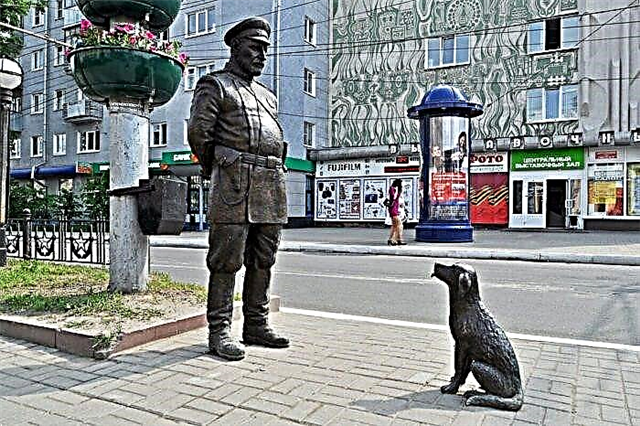
Monument to the veteran of the Great Patriotic War
The monument was inaugurated on June 22, 2011. This is a sculpture of a veteran sitting on a bench to rest and leaning on a cane between his legs. Next to the elderly veteran, his friend is a faithful dog. Sculptures of the monument - Svetlana Farnieva. The idea to add the dog to the composition belongs to the architect Golyshev. The bronze veteran has a real prototype - front-line tanker Pyotr Fyodorovich Filippenkov, who has earned many awards.

The sculptural composition "K. Tsiolkovsky and S. P. Korolev "
Installed in 2011, in honor of the 50th anniversary of Yuri Gagarin's flight into space. In reality, discussions are underway about the meeting of the two scientists, and it was they who became the reason for the installation of the monument. Leonov. Tsiolkovsky is holding a model of a rocket aimed at the sky, and Korolev is watching his colleague's actions. The figures are installed on a round pedestal in a small square at the intersection of streets named after scientists.

Attractions in the vicinity of Kaluga
Interesting places near the city, where you can go on weekends by car.
Museum-reserve "Linen Factory"
The historical, cultural and natural museum is located 35 km from Kaluga. This is a manor complex, which includes the Goncharovs' house, which looks more like a palace, buildings of linen and paper manufactories, a park, ponds and greenhouses. The noble estate belonged to the parents of Natalia Goncharova, Pushkin's wife. The interior zones recreate the atmosphere of those days when the poet visited the estate - an office, a ballroom, a living room.

Museum-diorama "The Great Stand on the Ugra"
The museum complex is dedicated to the events of the war of the distant 1480 - the victory of the Russian army of Ivan III over the troops of the Horde Khan Akhmet. It is located on the territory of the Vladimir Skete, 23 km from Kaluga in the floodplain of the Ugra River, in the place where the general battle took place. The canvas of the diorama is 6.7 meters high and 23.6 meters long. The artist Ryzhenko depicted 158 characters on it. When viewed, cannon shots, clatter of hooves, ringing of bells are heard.

Estate "Stepanovskoe-Pavlishchevo"
Former noble estate 58 km from Kaluga, which belonged to the Stepanov family. It was founded in the 17th century, but the surviving buildings date back to the 19th century. The regular part of the park with a linden alley leading from the main house to the pond is well preserved. Along the descent to the water, there are terraces with green spaces. The main house has survived, the architecture of which is executed in different styles, and the house of the manager with a mezzanine.

Ugra National Park
UNESCO Biosphere Reserve. Its ecosystems are so well preserved that they can serve as a model for the reconstruction of territories with similar conditions. There are hiking trails along the picturesque valleys of the Ugra and Zhizdra rivers. The unique art park Nikola Lenivets is located among various natural landscapes. A collection of objects of modern architecture and art is exhibited on its vast territory.

Tikhonov Assumption Hermitage
A large monastery complex is located 20 km from the city. The monastery was founded in the 15th century and is one of the iconic monuments of culture and history in the Kaluga region. The ancient buildings of the monastery were destroyed during the hostilities - Tatar pogroms, Lithuanian invasions and the Time of Troubles. The main monastery church is the Transfiguration Cathedral in the Byzantine style with a five-tiered bell tower.

Spaso-Preobrazhensky Vorotynsky Monastery
The nunnery, first mentioned in 1511. It was abolished in 1764, after which the monastery buildings began to collapse and by the beginning of the 20th century, only two parish churches survived, which were closed in the 1930s. The Transfiguration Church was founded in the 16th century, next to it is the Vvedenskaya Church. Both buildings have unusual architecture. In the 21st century, the ruins of the monastery were returned to the faithful, and the reconstruction of ancient temples began.

Optina Hermitage
One of the most revered places for religious people in Russia. The monastery is located 80 km from Kaluga. In the center of the monastery territory is the Cathedral of the Presentation of the Most Holy Theotokos in the Temple - the oldest preserved building of the monastery. It was built at the end of the 18th century. The monastery itself was founded in the 15th century. Churches are located around the cathedral. Divine services are held in the skete in the monastery grove around the clock.


